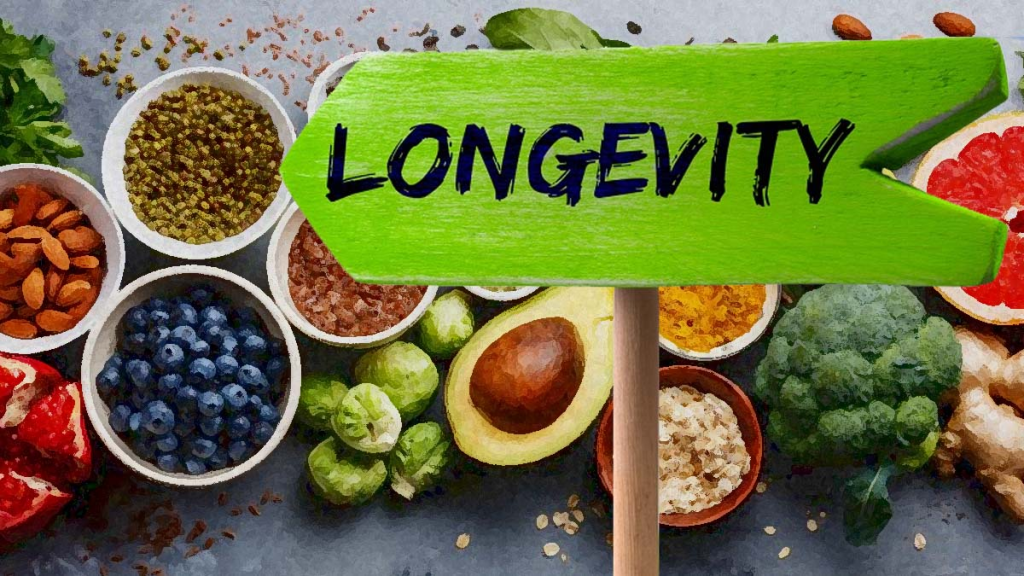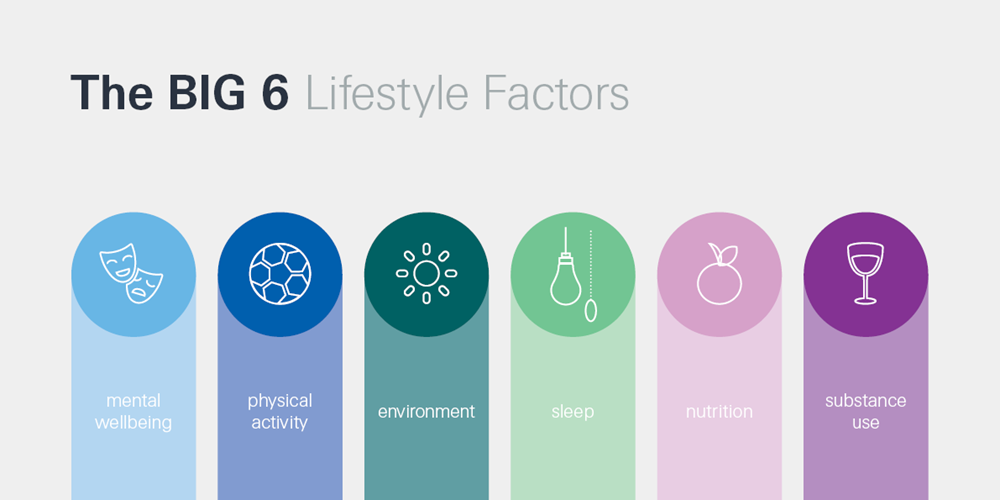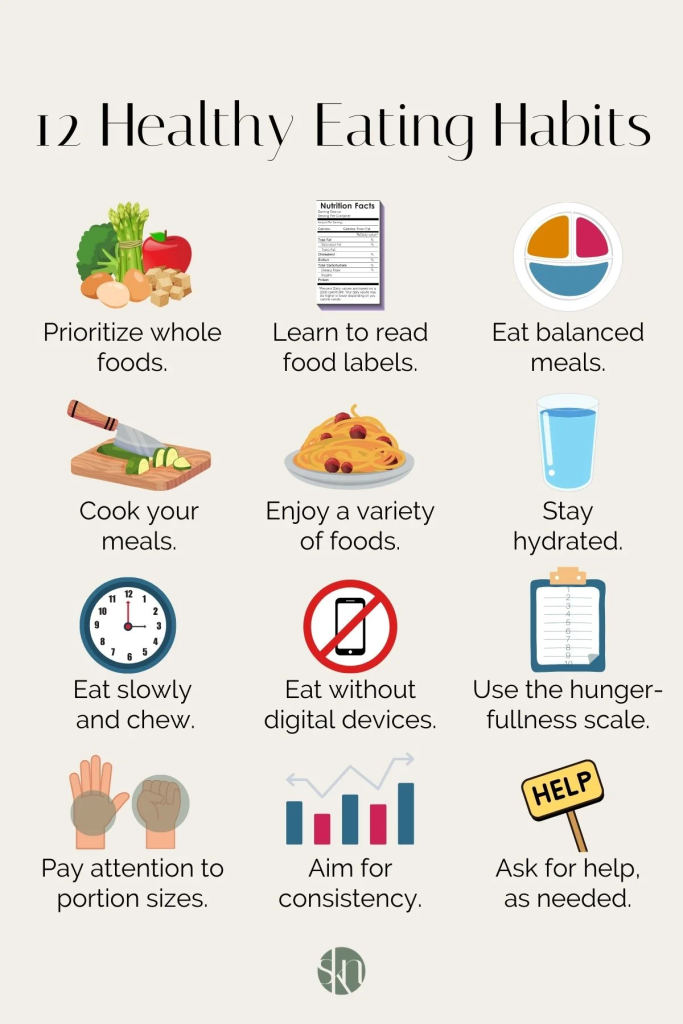Introduction to Longevity and Nutrition

[Source: debuglies.com]
Understanding Longevity
Longevity refers to the length of a person’s life. While some individuals are blessed with genes that predispose them to living longer, research increasingly shows that environmental factors play a substantial role in determining how long we live. Genetics, lifestyle choices such as exercise, sleep, alcohol consumption, smoking, and diet can influence the length and quality of life. [#1]
The concept of longevity has fascinated humans throughout history. From ancient quests for the fountain of youth to modern scientific research on extending human lifespan, we’ve consistently sought ways to add more years to our lives. Today, scientists have identified several regions around the world known as Blue Zones—areas where people commonly live past 100 years—and have studied the common factors that contribute to their exceptional longevity.
The Role of Nutrition in Longevity
Among all factors affecting how long we live, nutrition stands out as particularly significant. Diet plays an important role in helping people live longer and reduce their risk of chronic diseases. [#2]
What we eat affects virtually every system in our bodies. Food provides the building blocks for cell repair, influences our hormonal balance, impacts our immune function, and can either promote or reduce inflammation—a key factor in many age-related diseases.
Research consistently demonstrates that certain dietary patterns are associated with longer lifespans. These include:
- Mediterranean diet rich in olive oil, fish, fruits, vegetables, and whole grains
- Plant-forward eating patterns with minimal processed foods
- Moderate calorie intake and occasional fasting periods
- Limited consumption of refined sugars and processed meats
- Adequate hydration throughout the day
Health Span vs. Lifespan
An important distinction exists between simply living longer (lifespan) and living longer in good health (health span). The goal of nutritional approaches to longevity isn’t merely adding years to life but adding life to years—maintaining physical and cognitive function throughout our extended lives.
Health span focuses on delaying the onset of age-related diseases and disabilities. This concept has gained prominence as medical advances have extended average lifespans without necessarily improving quality of life in those later years.
Proper nutrition contributes significantly to health span by:
- Maintaining muscle mass and bone density
- Supporting cognitive function and brain health
- Reducing inflammation throughout the body
- Promoting gut health and microbiome diversity
- Supporting cellular repair mechanisms
As we explore the connection between nutrition and longevity throughout this article, remember that small, consistent dietary choices accumulate over time. The foods we consume daily shape our health trajectory and can significantly impact how well we age. By understanding the fundamental principles of longevity nutrition, we can make informed choices that support both a longer life and a healthier one.
Key Lifestyle Factors for Longevity

[Source: swissre.com]
Five Key Lifestyle Factors
While good nutrition forms the foundation of a long, healthy life, it doesn’t work in isolation. Research has identified several lifestyle factors that work synergistically to promote longevity. Harvard University researchers have pinpointed five specific low-risk lifestyle factors that can substantially increase your chances of living longer: maintaining a healthy diet, engaging in regular exercise, keeping a healthy weight, avoiding smoking, and consuming alcohol in moderation. [#3]
These five factors create a powerful combination effect. When implemented together, they don’t just add a few years to your life—they can transform your health trajectory. Consider this striking statistic: a six-year study conducted by the Centers for Disease Control and Prevention found that non-smokers who ate healthier diets and exercised moderately for at least 21 minutes daily reduced their mortality risk by an astonishing 82 percent. [#4]
Let’s examine each factor more closely:
- Healthy Diet: A diet rich in whole foods, particularly plants, provides essential nutrients that support cellular health and reduce inflammation. Blue Zone populations typically consume diets high in vegetables, fruits, whole grains, and legumes, with minimal processed foods.
- Regular Exercise: Physical activity doesn’t need to be intense to be effective. Regular movement lowers the risk of numerous chronic conditions including heart disease, hypertension, diabetes, osteoporosis, certain cancers, and cognitive decline. Even modest amounts of daily activity can yield significant benefits.
- Healthy Weight: Maintaining a weight appropriate for your height and build reduces strain on your cardiovascular system and decreases inflammation throughout the body. This doesn’t mean being model-thin—it means finding a sustainable weight that supports overall health.
- No Smoking: Tobacco use remains one of the most destructive lifestyle factors, damaging nearly every organ system. Quitting at any age provides immediate and long-term health benefits.
- Moderate Alcohol Intake: While some studies suggest potential benefits from modest alcohol consumption, excessive drinking clearly damages health. If you drink, limiting intake to recommended guidelines supports longevity.
Additional Factors Influencing Longevity

[Source: blog.podiumpro.in]
Beyond the five key factors, several other lifestyle elements contribute significantly to how long and how well we live:
- Quality Sleep: Consistent, restorative sleep allows the body to repair cells, consolidate memories, and regulate hormones. Adults who regularly get 7-8 hours of quality sleep show better health outcomes across multiple measures.
- Stress Management: Chronic stress accelerates cellular aging through various physiological pathways. Practices like meditation, deep breathing, or spending time in nature can mitigate these effects.
- Social Connections: Strong social bonds correlate with longer lifespans across cultures. Regular meaningful interaction with others provides emotional support and practical assistance during challenging times.
- Purpose and Meaning: People with a strong sense of purpose tend to live longer. Having reasons to get up in the morning—whether through work, volunteering, creative pursuits, or family responsibilities—appears to activate physiological pathways that support longevity.
- Environmental Factors: Clean air, safe drinking water, and minimal exposure to toxins create the conditions where healthy choices can have their full impact.
The interplay between these factors creates what researchers call a “virtuous cycle.” For example, better sleep improves your ability to make healthy food choices, which provides energy for exercise, which in turn promotes better sleep. Similarly, strong social connections often encourage healthier behaviors through positive peer influence.
What’s particularly encouraging about these lifestyle factors is their accessibility. Unlike genetic factors, which we cannot change, these elements remain largely within our control. Small, consistent improvements across multiple areas often yield better results than dramatic changes in just one domain.
As we age, the cumulative effects of these lifestyle choices become increasingly apparent. The habits we establish in early adulthood lay the groundwork for health in our later years. However, research shows it’s never too late to benefit from positive changes. Even people who adopt healthier habits in their 50s, 60s, or beyond show significant improvements in health outcomes and longevity.
Dietary Habits for a Longer Life

[Source: kaynutrition.com]
Essential Dietary Habits
The foods we consume daily play a crucial role in determining not just how long we live, but how well we live during those years. Research consistently shows that certain eating patterns can significantly impact our longevity prospects. Let’s explore the fundamental dietary habits that can help extend your lifespan.
First and foremost, consistency matters more than perfection. Establishing sustainable eating patterns that you can maintain for decades yields better results than cycling through extreme diets. The most beneficial approach focuses on daily choices rather than occasional indulgences or restrictions.
- Prioritize plant foods: Diets linked to longevity consist predominantly of whole or minimally processed, nutrient-dense plant foods such as fruits, vegetables, and legumes, and smaller amounts of quality animal foods such as omega-3 rich fish. [#5]
- Embrace healthy fats: Eating unsaturated fats in place of most saturated fats is associated with reduced risk of death from any cause. Foods like olive oil, avocados, nuts, and seeds provide these beneficial fats.
- Focus on fiber: Fiber has been associated with a decreased risk of death from any cause in several studies. Whole grains, legumes, fruits, and vegetables are excellent sources.
- Limit ultra-processed foods: Foods with long ingredient lists containing items you wouldn’t find in a home kitchen typically offer little nutritional value while delivering excess calories, sodium, and unhealthy fats.
- Practice mindful eating: Paying attention to hunger and fullness cues, eating slowly, and appreciating your food can prevent overeating and improve digestion.
The timing of meals may also influence longevity. Some research suggests that giving your digestive system regular breaks through time-restricted eating or occasional fasting might support cellular repair processes. However, the quality of what you eat remains more important than when you eat it.
The Best Foods for Longevity
Certain foods appear repeatedly in the diets of long-lived populations around the world. Incorporating these items into your regular meal rotation could help you live a longer, healthier life:
- Leafy greens: Spinach, kale, collards, and other dark leafy vegetables provide vitamins, minerals, and phytonutrients that combat oxidative stress and inflammation.
- Berries: These colorful fruits pack powerful antioxidants that help protect cells from damage. Blueberries, strawberries, and blackberries are particularly beneficial.
- Nuts and seeds: A handful of walnuts, almonds, flaxseeds, or chia seeds delivers protein, fiber, and heart-healthy fats that support cardiovascular function.
- Legumes: Beans, lentils, and chickpeas form dietary staples in Blue Zones where people routinely live past 100. They provide plant protein, complex carbohydrates, and soluble fiber.
- Whole grains: Unprocessed grains like oats, brown rice, quinoa, and barley contain fiber and nutrients that processed grains lack.
- Fatty fish: Salmon, sardines, and mackerel supply omega-3 fatty acids that reduce inflammation and support brain health.
- Fermented foods: Yogurt, kefir, sauerkraut, and kimchi contain probiotics that nurture gut health, which increasingly appears connected to longevity.
What’s particularly striking about these longevity-promoting foods is their versatility. They can be prepared countless ways across different culinary traditions, making them adaptable to various taste preferences and cultural backgrounds.
Beyond individual foods, certain eating patterns have demonstrated impressive longevity benefits. The Mediterranean Diet, rich in fruits, vegetables, whole grains, and healthy fats, consistently ranks among the most effective for extending lifespan. Similarly, the traditional Okinawan Diet from Japan and various plant-based eating patterns show strong associations with reduced disease risk and improved longevity.
Harvard nutrition expert Dr. Walter Willett recommends four simple dietary strategies for longevity: eat more plants, choose healthy protein sources, select healthy fats, and limit refined starches, added sugars, and salt. This straightforward approach captures the essence of longevity nutrition without requiring complicated rules or restrictions. [#6]
The beauty of these dietary recommendations lies in their flexibility. You don’t need to follow a specific diet perfectly to reap benefits. Even modest shifts toward more plant foods, fewer processed items, and better fat sources can yield meaningful improvements in health outcomes. Small, sustainable changes often prove more effective than dramatic dietary overhauls that prove difficult to maintain.
Remember that cultural context matters too. The healthiest diet for you incorporates foods you enjoy and can access regularly. Working with familiar ingredients and cooking methods while gradually incorporating more longevity-promoting foods creates lasting change without sacrificing pleasure or connection to your food heritage.
Nutrition Across the Lifespan

[Source: slideplayer.com]
Good nutrition isn’t a one-size-fits-all proposition—nutritional needs evolve dramatically throughout our lives. What nourishes us optimally at age 5 differs significantly from what our bodies require at 55. Understanding these shifting requirements helps establish eating patterns that support health and longevity at every stage. [#7]
Infancy, Childhood, and Adolescence
The foundation for lifelong health begins before birth and continues through our earliest years. Maternal nutrition during pregnancy profoundly impacts fetal development, while early feeding practices set the stage for future eating habits and metabolic health.
- First 1,000 days: The period from conception through age two represents a critical window where nutrition exerts outsized influence on development. Adequate protein, iron, zinc, iodine, folate, and omega-3 fatty acids support rapid brain growth and cognitive development.
- Childhood: Growing bodies need balanced nutrition to support bone development, immune function, and cognitive abilities. This period offers a prime opportunity to establish healthy food preferences that may persist throughout life.
- Adolescence: The teenage growth spurt creates increased demand for calories, protein, calcium, iron, and zinc. Girls particularly need adequate iron to replace menstrual losses, while both genders benefit from calcium-rich foods to maximize bone density.
During these formative years, exposure to diverse, nutrient-dense foods helps develop taste preferences that can last a lifetime. Research shows children may need multiple exposures—sometimes 10-15 tries—before accepting new foods, highlighting the importance of patience and persistence in developing healthy eating patterns.
Nutritional habits formed in childhood extend far beyond immediate health concerns. They establish metabolic patterns and food relationships that can influence health outcomes decades later. Children who regularly consume fruits, vegetables, and whole foods are more likely to maintain these habits into adulthood.
Early Adulthood and Midlife
As we transition into adulthood, nutritional priorities shift toward maintaining optimal function and preventing chronic disease. This period often brings competing demands of career, family, and other responsibilities that can make consistent healthy eating challenging.
- Early adulthood (20s-30s): Establishing independent eating patterns while balancing busy schedules becomes paramount. Nutrition during this phase supports reproductive health, athletic performance, and career demands.
- Midlife (40s-50s): Metabolic changes often begin during these decades, with many experiencing shifts in body composition and energy requirements. Nutrition that supports cardiovascular health, maintains muscle mass, and manages weight becomes increasingly important.
During midlife, many people notice their bodies respond differently to food than they did in younger years. Hormonal changes, decreased muscle mass, and reduced physical activity can alter caloric needs. However, nutrient requirements often increase, creating a situation where eating fewer calories while maintaining nutrient density becomes essential.
This stage presents an opportunity to refine eating patterns that will support health through the second half of life. Research indicates that dietary changes made in midlife can significantly impact health outcomes in later years, suggesting it’s never too late to improve nutritional habits.
Nutrition for Older Adults
As we age, nutritional needs continue to evolve. Older adults face unique challenges including changes in appetite, altered taste perception, potential medication interactions, and sometimes limited mobility affecting food preparation.
- Protein needs: Maintaining muscle mass becomes increasingly difficult with age, making adequate protein intake crucial. Many older adults benefit from higher protein consumption than in middle age, with emphasis on high-quality sources distributed throughout the day.
- Micronutrient considerations: Absorption of certain nutrients, including B12, calcium, and vitamin D, often decreases with age. Focused attention on these nutrients through diet or supplementation may be necessary.
- Hydration: The sensation of thirst frequently diminishes in older adults, increasing dehydration risk. Consistent fluid intake throughout the day supports cognitive function, kidney health, and overall wellbeing.
Social factors significantly impact nutrition in older populations. Those who eat with others typically consume more varied and nutritious diets than those who eat alone. Community meal programs, family dinners, and social eating opportunities can improve both nutritional status and quality of life for seniors.
Good nutrition across the lifespan forms a cornerstone of healthy aging and sustainable development. Meeting nutritional needs from infancy through old age builds a framework for health and wellbeing throughout life. This life-course approach recognizes that nutritional influences accumulate over time, with each life stage building upon previous ones.
The concept of nutritional programming suggests that dietary patterns at critical developmental periods can permanently alter metabolism and disease risk. This understanding highlights why nutrition matters at every age—each stage presents unique opportunities to support immediate health needs while simultaneously investing in future wellbeing.
Regardless of age, the fundamental principles of good nutrition remain consistent: emphasize whole foods, maintain adequate hydration, consume appropriate portions, and enjoy meals mindfully. These practices, adapted to meet changing physiological needs, support vitality and function throughout the lifespan.
Scientific Insights and Economic Value

[Source: scientificinsights.com]
The relationship between nutrition and longevity has become a focal point of scientific research in recent decades. As our understanding of how dietary patterns affect health outcomes deepens, researchers continue to uncover fascinating connections between what we eat and how long we live.
Research on Diet and Longevity
Scientific investigations into nutrition and longevity span from cellular-level studies to large-scale population research. These varied approaches provide complementary insights into how food choices influence our lifespan.
- Caloric restriction studies: One of the most consistent findings across species is that moderate caloric restriction without malnutrition can extend lifespan. Animal research demonstrates that reducing calorie intake by 20-40% while maintaining essential nutrients can significantly increase longevity.
- Blue Zone research: Studies of populations with exceptional longevity—such as Okinawa, Japan; Sardinia, Italy; and Ikaria, Greece—reveal dietary patterns rich in plant foods, moderate in calories, and low in processed ingredients.
- Telomere research: Emerging evidence suggests certain dietary patterns may help preserve telomeres—protective caps on chromosomes that shorten with age. Mediterranean-style diets have been associated with longer telomeres in some studies.
The scientific community has made remarkable progress in understanding how specific nutrients and dietary patterns affect aging processes. Research into sirtuins (proteins involved in cellular health), autophagy (cellular cleanup mechanisms), and inflammation pathways continues to reveal how food choices influence these fundamental biological processes.
Longitudinal studies tracking dietary habits and health outcomes over decades provide particularly valuable insights. The Nurses’ Health Study, Health Professionals Follow-up Study, and similar large cohorts have generated data showing clear associations between dietary patterns and disease risk, helping scientists identify which eating habits correlate with longer, healthier lives.
Health Economic Benefits of Nutritional Care
Beyond individual health benefits, good nutrition delivers substantial economic value at societal levels. Healthcare systems worldwide face mounting costs from diet-related chronic diseases, making nutrition a critical economic consideration.
- Reduced healthcare expenditures: Preventive nutrition interventions typically cost far less than treating diet-related diseases. Every dollar invested in high-quality nutrition can save multiple dollars in healthcare costs.
- Workplace productivity: Well-nourished populations experience fewer sick days, higher energy levels, and better cognitive performance, translating to economic advantages through enhanced workforce productivity.
- Nutritional assessment advances: In recent years, healthcare systems have developed better tools for identifying malnutrition risk and conducting nutritional assessments, allowing for more targeted and cost-effective interventions.
The economic case for nutrition becomes particularly compelling when considering the rising costs of age-related conditions. As populations grow older globally, healthcare systems face unprecedented challenges. Nutrition represents one of the most modifiable factors influencing healthy aging, offering a practical approach to reducing the economic burden of age-related diseases.
Cost-benefit analyses consistently show that nutrition education, food assistance programs, and dietary interventions yield positive returns on investment. For example, medical nutrition therapy for conditions like diabetes has demonstrated significant cost savings through reduced hospitalizations and complications.
Challenges in Long-term Dietary Studies
Despite substantial progress, researchers face considerable challenges when studying nutrition’s impact on longevity. These limitations affect how we interpret and apply findings.
- Time horizons: Truly understanding how diet affects lifespan requires decades of observation, making such studies expensive and logistically difficult.
- Confounding variables: Isolating dietary effects from other lifestyle factors (exercise, stress, sleep, genetics) presents significant methodological challenges.
- Measurement limitations: Most nutrition studies rely on self-reported food intake, which often contains inaccuracies due to recall bias and social desirability effects.
Another significant hurdle involves the complexity of human diets. We don’t consume nutrients in isolation but as part of intricate food matrices within varied dietary patterns. This complexity makes it difficult to determine whether observed benefits come from specific nutrients or from broader dietary patterns and food combinations.
Ethical considerations also limit certain types of nutrition research in humans. While randomized controlled trials represent the gold standard for establishing causality, assigning people to potentially suboptimal diets for long periods raises ethical concerns. Consequently, much of our knowledge comes from observational studies, which can identify associations but cannot definitively prove causation.
Despite these challenges, the scientific consensus continues to strengthen around core nutritional principles that support longevity. Researchers are developing innovative methods to overcome traditional limitations, including advanced biomarkers, metabolomics, and computational modeling approaches that may provide deeper insights into how nutrition affects aging processes.
The convergence of findings across different research methodologies—from basic science to epidemiology—builds confidence in key recommendations. When laboratory studies, animal models, and human population research all point toward similar conclusions, the case for specific dietary approaches becomes more compelling, even in the face of methodological limitations.
Global Perspectives on Nutrition and Longevity

[Source: internationalpublishers.org]
Nutrition and longevity aren’t just personal health concerns—they represent global challenges that intersect with economic development, cultural traditions, and public policy. As populations age worldwide, international organizations have increasingly recognized the critical role of nutrition in supporting healthy aging across diverse societies.
Sustainable Development Goals and Nutrition
The United Nations’ Sustainable Development Goals (SDGs) explicitly acknowledge nutrition as fundamental to global health and development. Several SDGs directly address nutritional factors that impact longevity:
- SDG 2: Zero Hunger – Aims to end malnutrition in all forms, including both undernutrition and diet-related non-communicable diseases that affect lifespan.
- SDG 3: Good Health and Well-being – Targets reduction in premature mortality from non-communicable diseases, many of which have strong nutritional components.
- SDG 12: Responsible Consumption and Production – Promotes sustainable food systems that can provide nutritious foods for current and future generations.
These interconnected goals highlight how nutrition serves as a cornerstone of sustainable development. Countries implementing SDG-aligned policies often adopt multi-sectoral approaches that connect agricultural practices, food distribution systems, and public health initiatives to improve nutritional outcomes across the lifespan.
Food security—reliable access to sufficient, safe, and nutritious food—varies dramatically across regions. While some nations struggle with undernutrition, others face rising rates of obesity and related chronic diseases. This dual burden of malnutrition presents complex challenges for global health systems seeking to promote longevity through improved nutrition.
The Decade for Healthy Aging
The World Health Organization has designated 2021-2030 as the Decade of Healthy Aging, recognizing that population aging represents one of the most significant social transformations of the 21st century. This initiative emphasizes nutrition as a key modifiable factor in promoting health among older adults worldwide.
- Age-friendly environments – Creating communities where older adults can access nutritious foods regardless of mobility limitations or socioeconomic status.
- Combating ageism – Challenging stereotypes that may limit nutritional interventions for older populations.
- Integrated care – Developing health systems that address nutritional needs as part of comprehensive geriatric assessment and care.
- Long-term care – Improving nutritional standards in residential facilities and home-based care settings.
The Decade for Healthy Aging recognizes that nutritional needs evolve throughout life, with particular attention needed during later years when physiological changes, medication use, and social factors may impact dietary intake and nutrient absorption.
Cultural Dietary Patterns and Longevity Lessons
Traditional dietary patterns from cultures with exceptional longevity offer valuable insights for global nutrition recommendations. These time-tested approaches to eating typically share common elements despite geographical and cultural differences:
- Plant-forward eating – Diets centered around vegetables, fruits, legumes, and whole grains appear consistently in long-lived populations. Dark leafy greens feature prominently, providing carotenoid antioxidants and folate that support cardiovascular health and DNA synthesis.
- Cruciferous vegetable consumption – Populations with exceptional longevity often consume abundant cruciferous vegetables like broccoli, cabbage, and kale, which are linked to lower risk of several chronic diseases, including cancer and cardiovascular conditions.
- Moderate protein intake – Many traditional longevity diets feature modest amounts of animal protein, often as a flavor enhancer rather than the meal centerpiece.
- Social eating contexts – Long-lived cultures typically emphasize meals as social occasions, with food preparation and consumption embedded in family and community relationships.
These cultural dietary patterns demonstrate that longevity-promoting nutrition isn’t about isolated superfoods but rather about balanced dietary approaches sustained over decades. Public health initiatives increasingly look to these traditional eating patterns for inspiration while adapting recommendations to local food availability, preferences, and nutritional challenges.
Global nutrition policies must balance universal principles with cultural sensitivity. Food represents more than mere sustenance—it carries cultural identity, social meaning, and traditional knowledge. Effective nutrition interventions respect these dimensions while promoting evidence-based dietary changes that support longevity.
Economic Disparities and Nutritional Access
Socioeconomic factors profoundly influence nutritional status and, consequently, longevity prospects. Global nutrition initiatives increasingly recognize that addressing economic barriers to healthy eating is essential for promoting longevity across populations:
- Food affordability – In many regions, nutrient-dense foods cost more than calorie-dense, nutrient-poor alternatives, creating economic barriers to longevity-promoting diets.
- Geographic access – Food deserts—areas with limited access to fresh, nutritious foods—exist in both developed and developing nations, affecting millions of people’s dietary options.
- Nutrition literacy – Educational disparities impact people’s ability to interpret nutrition information and make informed dietary choices.
Innovative approaches to addressing these disparities include subsidies for nutritious foods, community garden initiatives, nutrition education programs, and food prescription programs that connect healthcare systems with food access solutions. These multi-faceted strategies recognize that improving nutrition for longevity requires addressing systemic barriers, not just individual choices.
The global perspective on nutrition and longevity reminds us that dietary patterns exist within complex social, economic, and environmental contexts. As research continues to refine our understanding of how nutrition influences aging processes, translating this knowledge into accessible, culturally appropriate dietary guidance remains a critical global health priority.
Conclusion and Actionable Insights

[Source: vecteezy.com]
The relationship between nutrition and longevity represents one of the most powerful connections in human health—a link supported by decades of research and centuries of observational wisdom. As we’ve explored throughout this article, the foods we consume daily shape our health trajectory and influence how well we age.
Summary of Key Points
Our journey through the science of nutrition and longevity has revealed several consistent themes:
- Whole food focus – Research consistently shows that diets centered around minimally processed foods support longer, healthier lives. Whole foods retain their natural nutrient profiles and beneficial compounds that processed alternatives often lack.
- Plant predominance – The evidence overwhelmingly favors diets rich in plant foods. From the Mediterranean to Okinawa, populations with exceptional longevity consume abundant fruits, vegetables, legumes, nuts, and whole grains.
- Moderation matters – Long-lived populations rarely practice extreme dietary restrictions. Instead, they demonstrate sensible portion control and balanced macronutrient intake.
- Consistency over time – Longevity benefits come from sustained nutritional habits rather than short-term dietary changes.
- Social context – How we eat matters alongside what we eat. Shared meals and positive food relationships support both nutritional health and psychological wellbeing.
These principles transcend specific diet labels, offering a flexible framework that can be adapted across cultural preferences, personal tastes, and individual health needs. The science of nutrition for longevity isn’t about perfection but about creating sustainable patterns that nourish the body throughout life.
Practical Steps for Implementing Good Nutrition
Translating nutritional knowledge into daily habits requires practical strategies. Here are actionable steps to incorporate longevity-promoting nutrition into your life:
- Start with small changes – Rather than overhauling your entire diet at once, begin with manageable adjustments. Add an extra serving of vegetables daily, swap refined grains for whole alternatives, or incorporate a weekly meatless meal.
- Practice the plate method – Aim to fill half your plate with vegetables and fruits, one quarter with whole grains or starchy vegetables, and one quarter with protein-rich foods. This simple visual guide helps create balanced meals without complex calculations.
- Diversify your plant intake – Challenge yourself to try new fruits, vegetables, legumes, nuts, and grains regularly. Different plant foods offer varied phytonutrients that support cellular health and function.
- Develop cooking skills – Learning basic culinary techniques empowers you to prepare delicious, nutrient-dense meals at home. Even mastering a few simple recipes can reduce reliance on processed convenience foods.
- Plan for success – Weekly meal planning, strategic grocery shopping, and batch cooking can make healthy eating more accessible during busy periods.
- Address barriers proactively – Identify your personal challenges to healthy eating—whether time constraints, budget limitations, or taste preferences—and develop specific strategies to overcome them.
Remember that nutrition for longevity isn’t about dietary perfection. The occasional indulgence won’t negate the benefits of your overall pattern. What matters most is consistency—creating sustainable habits that you can maintain for decades.
Future Directions in Nutrition and Longevity Research
While we’ve learned much about how nutrition influences aging, exciting research frontiers promise to deepen our understanding:
- Personalized nutrition – Emerging research suggests that individual responses to foods vary based on genetics, microbiome composition, and metabolic factors. Future nutritional guidance may become increasingly tailored to personal biology.
- Timing of food intake – Chrononutrition research examines how meal timing affects metabolic health and longevity. Time-restricted eating and circadian-aligned meal patterns show promise for optimizing health span.
- Bioactive compounds – Beyond macronutrients and micronutrients, thousands of bioactive food compounds influence cellular aging processes. Ongoing research aims to identify key compounds and their optimal intake levels.
- Gut microbiome interactions – The complex relationship between diet, gut microbiota, and longevity represents a rapidly evolving research area with potential for new dietary recommendations.
- Nutritional geroscience – This emerging field examines how specific nutrients and dietary patterns influence the fundamental biological mechanisms of aging.
These research directions may eventually refine our understanding of optimal nutrition for longevity. However, the core principles identified today—emphasizing whole, plant-predominant foods in balanced patterns—will likely remain foundational.
The Lifelong Journey of Nutritional Health
Nutrition for longevity isn’t a short-term project but a lifelong journey. Each life stage presents distinct nutritional needs and opportunities to support healthy aging:
- Early life nutrition – Nutritional patterns established in childhood and adolescence lay the groundwork for lifelong health. Developing healthy food preferences and positive relationships with eating during these formative years creates a foundation for longevity.
- Midlife maintenance – During middle adulthood, nutrition plays a crucial role in preventing chronic disease development and maintaining metabolic health. This period offers opportunities to establish habits that will support health in later decades.
- Older adult adaptation – As we age, nutritional needs evolve. Maintaining adequate protein intake, optimizing nutrient density, and addressing age-related changes in appetite and digestion become increasingly important.
At every stage, nutrition represents a powerful tool for supporting health and vitality. The cumulative effect of decades of nutritional choices significantly shapes how we experience our later years.
The connection between good nutrition and longevity reminds us that everyday food choices matter. Each meal represents an opportunity to nourish our bodies and support our long-term health. By embracing the principles outlined in this article and adapting them to your personal preferences and circumstances, you can harness the power of nutrition to promote not just a longer life, but a healthier, more vibrant one.
As nutrition science continues to advance, our understanding of optimal dietary patterns will undoubtedly evolve. Yet the fundamental message remains clear: what we eat profoundly influences how we age. By making informed nutritional choices today, we invest in our health for all the tomorrows to come.
References
- 1. How to Eat for a Long and Healthy Life
https://www.nytimes.com/2024/09/02/well/eat/foods-longevity-aging.html - 2. No one-size-fits-all diet for improving longevity
https://hsph.harvard.edu/news/diet-longevity-whole-foods/ - 3. Healthy Longevity – The Nutrition Source
https://nutritionsource.hsph.harvard.edu/healthy-longevity/ - 4. longevity | Health Topics
https://nutritionfacts.org/topics/longevity/ - 5. Add These 12 Foods to Your Plate to Support Healthy Aging
https://www.onepeloton.com/blog/longevity-foods/ - 6. Harvard expert: 4 simple ways to eat for longevity in 2024
https://www.cnbc.com/2024/01/06/harvard-expert-4-simple-ways-to-eat-for-longevity-in-2024.html - 7. Good nutrition across the lifespan is foundational for …
https://pmc.ncbi.nlm.nih.gov/articles/PMC9902887/